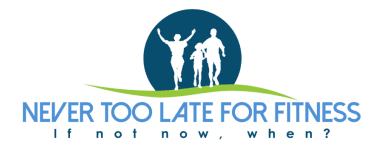If you’re looking for a workout that will melt fat leaving you with a lean and fit body in the shortest amount of time, HIIT is where you want to be. The main reason why HIIT has become a near frenzy for the past few years is because it really works.
HIIT is the best workout available for those who want to tone, burn fat and build muscle but don’t have a lot of time to devote to long gym workouts. It’s never boring because you can vary your workout routine from walking, biking, lifting weights to Zumba dancing.
Here are a few reasons why HIIT is the best workout to transform your body:
- Fast and convenient – Do your exercises anywhere and in less than 30 minutes. Exercise sets may begin with 60 seconds of intense effort followed by 2 minutes of recovery.
- Your metabolism keeps running – Even after your HIIT workout is over, you’ll still be burning fat for up to 48 hours after the routine.
- Combines aerobic and anaerobic exercise benefits – You’ll enjoy the oxygen benefit that aerobic exercise provides and the benefit of building muscle mass with anaerobic exercises.
- Increase cardiovascular health – It’s been proven that HIIT consisting of “brief and intense” exercise can lessen risk for cardiovascular disease.
- Can be adapted to any fitness level – Unlike many fitness programs that require you to have a certain skill or fitness level, HIIT lets you can start with whatever your current fitness level is.
- Cost effective – You can do without any equipment and without a gym membership.
- HIIT can be effective with Diabetes and heart failure patients – When done with specially supervised and screened programs.
You can take your cardio exercise sessions from the track to the swimming pool and everything in between – customizing the HIIT program until it fits what you like to do most. HIIT involves changing your pace at various points during the workout and using various workout methods.
You never get bored and your body doesn’t know what’s coming next, so virtually every muscle in your body gets used in the HIIT workout routine. If you’re looking for quality in a workout session, you won’t find any better than the HIIT method.
HIIT is one of the best kept secrets of professional athlete coaches. Now, you can work out like an athlete, getting the same results in the shortest amount of time.
The History and Concept of HIIT
The popularity of the HIIT workout began not too long ago at the beginning of the 2010s. The Tabata workout, which was part of a 1996 study by Professor Izumi Tabata, was an early version of the present HIIT program and was used to train Olympic speed skaters.
The Peter Coe regimen was developed in the 1970s for his son, Sebastian. Coe’s exercise sessions involved 200 meter runs that were integrated with a 30-second recovery between each run. Coe’s program helped his son to become a world class middle distance runner. He was the only athlete to win the Olympic 1500-meter title. http://www.sports-reference.com/olympics/athletes/co/seb-coe-1.html
The Gibala regimen originated by Professor Martin Gibala and his team in Canada was researched for several years and resulted in a 2011 paper. They touted the regimen as being a good option for less active people who may not have exercised for several years. The regimen included a short warm up, 10 repetitions at 60-second high intensity bursts of activity and 60 seconds of recovery followed by a cool-down lasting for five minutes. http://jp.physoc.org/content/590/5/1077.full
A professor of biology at the University of Loughborough, Jamie Timmons, developed the Timmons regimen that included an exercise bike routine of two minutes of slow pedaling and 20 second bursts of fast cycling. Timmons advocated performing the regimen three times per week at a total of three minutes for the intense part of the exercise, plus a warm up and recovery. https://www.youtube.com/watch?v=E42TQNWhW3w
How HIIT Works
No matter which regimen of HIIT you choose, you’re sure to get the results you want. The concept is simple. During exercise your body uses oxygen to create energy, but when you’re performing aerobic exercise the body’s demand for oxygen causes you to breathe faster to draw in more oxygen.
Aerobic exercises mean your body requires more oxygen to create energy. Your muscles begin to burn, and you must make up for lack of oxygen after exercising.
The HIIT concept dictates that you split the oxygen-using exercises by working hard for short intervals, for example 30 to 60-seconds, and then lower the intensity to recover. While this seems severe, this process is easier on the body. And it works.
HIIT works by combining aerobic and anaerobic exercises for the most efficient use of oxygen and burning fat. Aerobic and anaerobic concepts are covered in Chapter 3 of this guide.
You have a realistic idea of your physical state before you begin a HIIT program. If you’re entirely out of shape or obese, you should work with a professional to manage your program.
Starting off with 30 days of walking for 30 minutes and increasing to 60 minutes or more is a good way to prepare your body for a HIIT program. Mix in some yoga for balance and strength to get your joints and muscles engaged.
If you begin right off with HIIT, you may injure yourself and then must take time to recuperate. Whatever you decide, once you start HIIT to get fit, you won’t be disappointed.
HIIT Guidelines
Knowing the HIIT guidelines before you begin is essential. The HIIT guidelines are as follows:
- The design of the HIIT program is for those who want to increase cardio fitness, endurance levels and lose fat without losing muscle mass.
- Before you engage in HIIT, be sure that you can tolerate exercising for 20 to 30 minutes and at about 75% of your highest heart rate without becoming exhausted.
- Build up your HIIT exercise regimen gradually and don’t just jump into the program.
- Include a warm up and cool down both before and after every HIIT workout.
- Give it your all during the high-level intensity intervals. Remember that intensity is relative. What one person feels is a 9 on a 10-point scale can be a 5 to another person. It’s important for you to determine what level of intensity you can handle. One way to judge intensity is when you feel a burning sensation in your muscles. When this happens, you know that you’ve hit your anaerobic zone. Make it a point to slow down after that.
- In the beginning, a full recovery takes up to four minutes, but you can decrease that time if your high intensity levels are shorter and you don’t exhaust the anaerobic energy. When I first started HIIT training, I was out of shape and took 3-4 minutes for me to recover. Within a few months, I had cut it to 1 minute.
- If you experience any difficulties during your HIIT workout such as chest pain or difficulties breathing, begin the cool down portion of the workout. Don’t stop suddenly.
- Listen to your body and pay attention to your heart rate. If it doesn’t drop to approximately 70% during the recovery intervals, decrease the time for your intense work intervals or add time to your recovery periods. I wear a heart rate monitor and use it to guide my intensity and recovery. Because I have A fib I want to limit my max heart rate to <150 and get it below 110 during recovery. If my heart rate isn’t where it needs to be when the next interval is supposed to start, I wait until it is.
- Don’t attempt HIIT if you’re a complete beginner to exercising or if you have heart or other problems that may put you at risk during an intense workout.
A 5 to 10 minute warm up is recommended before you begin to work out. Whatever the activity, begin with the highest level of speed and power you can manage for one minute. Recover for 2 or 3 minutes and then repeat the exercise. Begin low with the intervals and see if you can increase them to 10 or 12 intense work cycles.
HIIT is the most intense workout you’ll likely ever perform, so it’s important that you get the go-ahead from your health care professional before beginning the program. Take another safety precaution by bringing water so you can stay hydrated.
When HIIT is Not for You
HIIT is an incredibly effective method providing you with impressive results to your body and health in much less time than other popular workouts. However, if you’re totally out of shape because you haven’t exercised in months or years, it’s best to try another form of workout until you get into the fitness mode necessary for HIIT.

